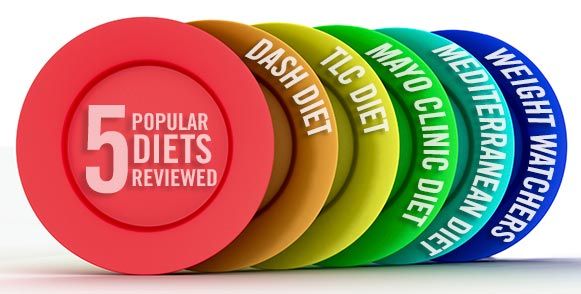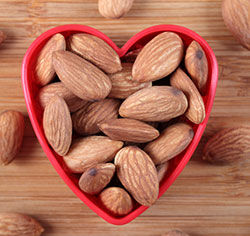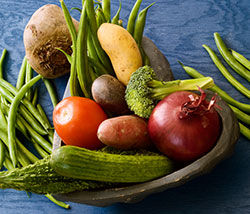
The diet landscape has certainly changed in the past few couple of decades. In 2013, only about 20 percent of adults reported being on a diet, down from 31 percent in 1991, according to the NPD Group.
Yet, while fewer people may be dieting, the yearning for the next best diet is unlikely to ever go away. Of course, that begs one obvious question: What is the best diet anyway?
As you may suspect, the answer varies from person to person. When it comes to losing weight and keeping it off, after all, there is no one-size-fits-all approach (no matter what the countless diet books say). “In choosing the best diet, I ask clients if they can see themselves eating this way a year from now,” says Molly Morgan, R.D., C.D.N., board-certified sports specialist dietitian in Vestal, N.Y., and author of Skinny-Size It (Harlequin, 2014). “If the answer is yes, that might be a winner, as the best diet is one you can stick with long-term.”
That being said, certain diets do take the cake, so to speak, and at the beginning of this year, U.S. News and World Report, aided by a panel of 22 leading health experts, ranked 32 of these diets.
We decided to take a look at the top five (three tied for third place), pulling in our own experts to understand what vaulted these diets to the top and for whom they’re best suited. Of course, as a fitness professional, prescribing a diet is outside your scope of practice, but at the very least, educating yourself about these diets can arm you with information to pass along to your clients. Let the diet wars begin.
1. The DASH Diet
 The Premise: Developed in conjunction with the National Heart, Lung and Blood Institute to lower blood pressure, this heart-healthy diet focuses on fruits, vegetables, fat-free or low-fat milk and related products, whole grains, fish, poultry, beans, seeds and nuts. All of these foods are lower in sodium, saturated fat, trans fat, cholesterol and added sugars. People who follow this diet receive specific guidelines, based on calorie needs, for how many daily servings they should eat from various food groups. The diet also encourages a baseline of 30 minutes of moderate activity daily. Those who want to avoid weight gain or keep lost weight from returning are encouraged to shoot for 60 minutes of moderate-to-vigorous activity every day.
The Premise: Developed in conjunction with the National Heart, Lung and Blood Institute to lower blood pressure, this heart-healthy diet focuses on fruits, vegetables, fat-free or low-fat milk and related products, whole grains, fish, poultry, beans, seeds and nuts. All of these foods are lower in sodium, saturated fat, trans fat, cholesterol and added sugars. People who follow this diet receive specific guidelines, based on calorie needs, for how many daily servings they should eat from various food groups. The diet also encourages a baseline of 30 minutes of moderate activity daily. Those who want to avoid weight gain or keep lost weight from returning are encouraged to shoot for 60 minutes of moderate-to-vigorous activity every day.
Pros: DASH focuses on changing eating behaviors to give you long-lasting weight benefits, which earns accolades from Deborah Orlick Levy, M.S., R.D., health and nutrition expert in Bergen County, N.J., and nutrition consultant for Carrington Farms. “To lose weight, you have to make lifestyle changes you can stick with,” she says. She also likes the exercise component.
Cons: For some people, this diet may be difficult. “Without professional guidance, it could be overwhelming for people who need to make major changes in their eating habits,” Levy says. The diet may also not be suited for high-performance athletes who don’t need to reduce sodium, Morgan says.
Who Should Consider This Diet: With the exception of these athletes, anybody who’s looking for lasting changes, especially if they’ve been diagnosed with heart issues or have a family history of heart problems.
2. TLC Diet
 The Premise: The Therapeutic Lifestyle Changes (TLC) Diet focuses on significantly decreasing fat, especially saturated fat, to lower cholesterol levels. High cholesterol levels, after all, can increase one’s risk for heart disease. The mainstay of this diet, which was created by the National Institutes of Health and is endorsed by the American Heart Association, involves decreasing saturated fat to less than 7 percent of total caloric intake. Dietary cholesterol is also limited to less than 200 milligrams a day, and followers are advised to increase plant-based foods (for fiber). A guide details how many servings of certain food groups people should eat each day, all based on calorie requirements. The diet also encourages at least 30 minutes of moderate-intensity physical activity most days of the week.
The Premise: The Therapeutic Lifestyle Changes (TLC) Diet focuses on significantly decreasing fat, especially saturated fat, to lower cholesterol levels. High cholesterol levels, after all, can increase one’s risk for heart disease. The mainstay of this diet, which was created by the National Institutes of Health and is endorsed by the American Heart Association, involves decreasing saturated fat to less than 7 percent of total caloric intake. Dietary cholesterol is also limited to less than 200 milligrams a day, and followers are advised to increase plant-based foods (for fiber). A guide details how many servings of certain food groups people should eat each day, all based on calorie requirements. The diet also encourages at least 30 minutes of moderate-intensity physical activity most days of the week.
Pros: “Providing specific calorie levels for men and women gives guidance for people, which is always helpful in a diet,” Morgan says. The focus on eating more fruits, vegetables and whole grains while lowering fat and salt is also advantageous, Levy says.
Cons: Levy cites the same disadvantage as she noted with the DASH Diet—without professional guidance, making these changes could overwhelm some people. Lowering saturated fat might also come with a caution. “It’s a no-brainer that you need to ditch fatty meats,” Morgan says. “But science is starting to show that cutting other sources of saturated fat—like coconut oil, for instance, which could be beneficial to health—is an antiquated message.”
Who Should Consider This Diet: Anybody who wants to achieve an overall healthy lifestyle, especially if heart issues factor strongly on their list of concerns.
3. Mayo Clinic Diet (TIED)

The Premise: The Mayo Clinic calls its diet a weight-loss program for life. There are two main parts to this diet. The first is a two-week phase focused on jumpstarting weight loss. By adding five healthy habits (like eating breakfast and switching to whole grains), stopping five unhealthy habits (like eating no sugar except for fruits and no snacks except fruits and veggies) and adding five healthy bonus habits (like keeping an activity record), people can expect to lose 6 to 10 pounds during those two weeks. The second phase, which highlights steady weight loss of 1 to 2 pounds a week, features information about food choices, portion sizes, menu planning and sticking with healthy habits. Overall, the diet centers on fruits and veggies in large volumes. Other foods that make up the Mayo Clinic Healthy Weight Pyramid include whole-grain carbohydrates, lean protein sources (like legumes, fish and low-fat dairy) and unsaturated fats. People are encouraged to log at least 30 minutes of moderately intense exercise daily.
Pros: The fact that this diet addresses dietary changes you can make for life is the biggest plus, Morgan says. It also doesn’t eliminate food groups; when diets do eliminate food groups, it makes it harder for people to stick with them long-term.
Cons: The strict rules during the first two weeks may not appeal to some people, Levy says. The fact that this diet is so low in fat could also be an issue for extremely active people. “For a very active individual, getting enough calories in a day while eating low-fat can be extremely challenging,” Morgan says.
Who Should Consider This Diet: Except with the caveat above, anybody, especially those with a history of heart disease.
3. Mediterranean Diet (TIED)

The Premise: Although there are many variations of this diet, the basic tenets remain the same. People who follow this eating style generally base their meals around plant-based foods like fruits, vegetables, whole grains, olive oil, beans, nuts, legumes and seeds, and herbs and spices, according to Oldways, a nonprofit food and nutrition education organization. Those following this diet might also enjoy fish, seafood and poultry about twice a week, up to seven eggs a week, and low-fat and non-fat versions of cheese and yogurt daily. Meats and sweets, however, factor low on this diet. Water is encouraged, and red wine is consumed in moderation. Logging daily exercise, sharing meals with others, and appreciating healthy and delicious foods, especially those sourced locally, also factor into this plan.
Pros: The top strength? “The plan encourages you to eat locally, which means you can support and get to know the farmers and producers in your community,” says Layne Lieberman, M.S., R.D., C.D.N., author of Beyond the Mediterranean Diet (WorldRD, 2013) and culinary nutritionist in Boulder, Colo. Another advantage is the emphasis on seafood, especially sustainable seafood, and legumes, with less reliance on meat for protein. Not only is this better for the environment, it’s also healthier for the body. “You eat less saturated fat, and with the emphasis on seafood and legumes, you get a better balance of fatty acids, plus more soluble fiber, vitamins and minerals from legumes,” she adds.
Cons: It’s possible to misinterpret the olive oil message and overconsume it. Not all olive oil is the same, as many are highly processed or blended with lower quality oils, Lieberman says. Dairy, which can provide good sources of nutrients like calcium, magnesium and vitamin D, is also limited.
Who Should Consider This Diet: Anybody who wants to embrace a healthier lifestyle, especially those who are tired of dieting per se.
3. Weight Watchers (TIED)

The Premise: Weight Watchers assigns every food a certain number of points based on the nutrient profile of each food. You can eat whatever you want as long as you stick with your daily point target, which is determined by variables like your weight, height, age and gender. Foods with empty calories naturally cost more, while nutritionally dense foods cost less. You can also earn extra food points by exercising. There are fees with this diet, but they vary, depending on whether you choose to attend weekly meetings or use online tools.
Pros: For somebody who needs guidance on how to eat and make behavior changes, this diet delivers. “People feel like their hand is being held, and many people need that,” says Levy, adding that the built-in support system is another plus for dieters. And if you can’t find what you need from support groups or meetings, you have access to numerous other tools and resources, many of them online. Another benefit? It also addresses caloric intake for athletes, which Morgan says can get overlooked in other diets.
Cons: While numerous individuals have had great success on this diet, the point system could pose some issues. “You might get so stuck on the points that you’re not looking at the foods,” Levy says. As a result, you might not fill up on the healthiest of foods. “That could work in the short-term, but once people lose weight, they might stop counting points and gain weight.”
Who Should Consider This Diet: People who need support, especially those who don’t have that in their own life, and solid structure.





 by
by 

 The Premise: Developed in conjunction with the National Heart, Lung and Blood Institute to lower blood pressure, this heart-healthy diet focuses on fruits, vegetables, fat-free or low-fat milk and related products, whole grains, fish, poultry, beans, seeds and nuts. All of these foods are lower in sodium, saturated fat, trans fat, cholesterol and added sugars. People who follow this diet receive specific guidelines, based on calorie needs, for how many daily servings they should eat from various food groups. The diet also encourages a baseline of 30 minutes of moderate activity daily. Those who want to avoid weight gain or keep lost weight from returning are encouraged to shoot for 60 minutes of moderate-to-vigorous activity every day.
The Premise: Developed in conjunction with the National Heart, Lung and Blood Institute to lower blood pressure, this heart-healthy diet focuses on fruits, vegetables, fat-free or low-fat milk and related products, whole grains, fish, poultry, beans, seeds and nuts. All of these foods are lower in sodium, saturated fat, trans fat, cholesterol and added sugars. People who follow this diet receive specific guidelines, based on calorie needs, for how many daily servings they should eat from various food groups. The diet also encourages a baseline of 30 minutes of moderate activity daily. Those who want to avoid weight gain or keep lost weight from returning are encouraged to shoot for 60 minutes of moderate-to-vigorous activity every day. 




